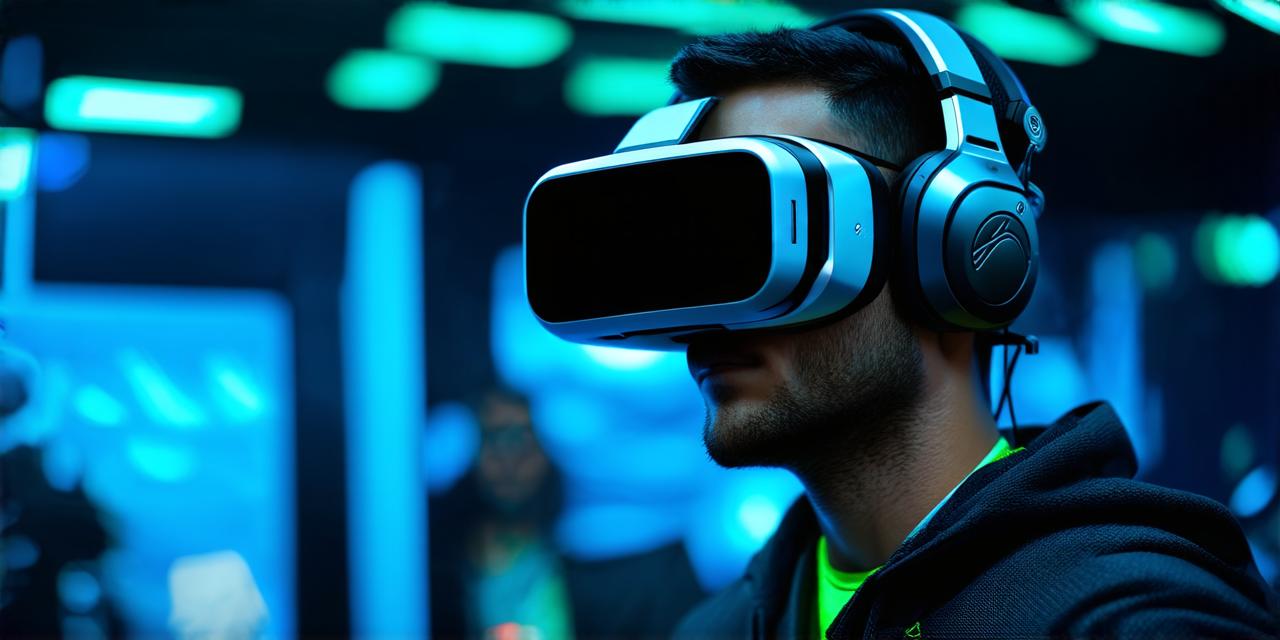Virtual reality (VR) refers to computer-generated simulations that create an immersive and interactive environment for users to experience and interact with. VR technology can be used in various fields such as gaming, education, healthcare, and more. The main objective of VR is to provide a realistic and engaging experience that feels like the user is physically present in the simulated environment.
Virtual reality technology consists of several components, including a head-mounted display (HMD), sensors, motion controllers, and computers. The HMD displays a 3D image that appears to float before the user’s eyes, while sensors track the user’s movement and adjust the simulation accordingly. Motion controllers allow users to interact with virtual objects by mimicking real-world hand gestures, such as pointing or grabbing.
The computers generate the virtual environment, which is based on a 3D model of the real world or a completely fictional environment. The graphics are so realistic that they can fool the user’s senses into thinking that they are in a physical environment. With advancements in technology, VR headsets have become more comfortable and lightweight, making them more accessible to a wider range of users.
Case Studies and Personal Experiences
Virtual reality technology has been used in various industries to create immersive experiences for users. In the gaming industry, VR has revolutionized the way players experience games by allowing them to physically interact with the game world. For example, players can explore a virtual city or battle against virtual enemies using motion controllers to wield weapons and interact with objects.
In the education field, VR has been used to create simulations that allow students to learn about historical events or scientific concepts in an engaging and interactive way. For example, students can take a virtual tour of ancient Egypt or explore the human body in 3D. Virtual reality has also been used in healthcare to provide patients with a more realistic and engaging experience during treatments. For example, VR can be used to simulate surgeries or provide pain relief by creating a calming and relaxing environment for patients.
Virtual reality technology has also been used in the real estate industry to allow potential buyers to explore properties virtually. This has become particularly popular during the COVID-19 pandemic, as many people are unable to physically visit properties.
Expert Opinions and Real-Life Examples
Many experts in the field of virtual reality have praised its potential to revolutionize various industries. According to Dr. Richard Vanderheiden, a professor at the University of Michigan Ross School of Business, VR has the potential to transform industries such as education, healthcare, and retail by providing more engaging and interactive experiences for users.
One real-life example of VR technology in action is the use of virtual reality in the field of architecture. Architects can use VR to create realistic simulations of their designs, allowing clients to experience and interact with the designs in a more immersive way. This can lead to better communication between architects and clients and ultimately result in more successful projects.
Virtual reality technology has also been used in the fields of design, engineering, and manufacturing to improve productivity and efficiency. For example, engineers can use VR to simulate complex machinery and test designs before building them in real life, saving time and money.
Conclusion
Virtual reality technology has the potential to revolutionize various industries by providing users with immersive and interactive experiences that feel like they are physically present in the simulated environment. With the advancements in VR technology, it is clear that this field will continue to grow and evolve in the coming years. Whether you are a developer or simply interested in the latest technological advancements, virtual reality is definitely worth exploring. As the technology continues to improve, we can expect to see even more creative and innovative uses of VR in various industries.
